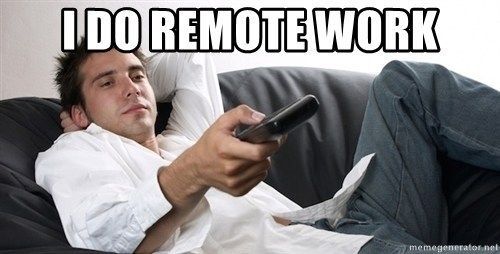Productivity Anywhere
The secret to business success is a productive team. When everyone worked in office, creating the right environment seemed somehow easier. Today, there are different ways of working – with advocates for each one: in-office, remote and hybrid. What is clear is that things are never going to be like they were before. But you still need to meet your business objectives. So you need your team to be productive wherever they work from. Is that even possible? This blog post is going to look at 5 strategies you can use to elevate your teams’ productivity – no matter where they log in from.
Reality Check
For most teams, remote work is something relatively new. Initially introduced out of necessity, it didn’t just change how people worked but changed the way people viewed work itself. As the pandemic restrictions eased out, there was a new awareness to how we could work and even why we work. We witnessed the Great Resignation, Quiet Quitting, even Quiet Firing along with a host of new abbreviations – WFH, RTO, IONW.
Recent Trends
Recent research findings have not been able to prove which method of working is really working. Research in 2022 indicated that remote workers were 5-10% more productive. While recent research suggests remote workers might be 10% less productive.
Remote or hybrid workers were 22% happier and more likely to stay in their jobs. Other benefits of working remotely included mental & physical improvement in health, better work-life balance, improved job satisfaction, health improvement. No wonder employees have pushed back against corporate mandates to return to office. The downside, according to scientists, included “challenges with communicating remotely, barriers to mentoring, building culture and issues with self-motivation.”
However, working together in an office promoted better collaboration, increased sense of belonging & purpose.
“A recent study from the National Bureau of Economic Research (NBER) found that remote working might not be as productive as once thought. Workers who were randomly assigned to work from home full time were 18% less productive than in-office employees, either taking longer to complete tasks or getting less done.”

Challenges to productivity
In Office
Long commutes, poor work-life balance, increased expenses, and low inclusivity are some of the major reasons employees are unhappy working in office. And while productivity scores may initially seem high, it may well be impacted by burn-out and low job satisfaction.
Working in office brings its own productivity challenges. Supervisors who oversee teams may find themselves biased in many different ways. Over-burdened managers can hardly be expected to personalize feedback to each individual. Thus, missing the opportunity to truly unlock motivation and productivity in their teams.
Remote work/WFH
If remote work is entirely dependent on the individual, it is quite possibly the worst method of working. From understanding which tasks are a priority, focussing on the important work and remaining motivated, it’s very hard to find employees who are able to stay the course by themselves.
Hybrid
While logically, hybrid can be the best of both worlds, it also creates a lack of rhythm and routine in teams. The shift between working in office or remote and the consequent mental adjustments can be challenging. Switching in and out of these modes maybe difficult for individuals.
Workspace vs. Headspace
It seems clear that the debate about productivity seems to have less to do with the location of work and more to do with the systems in place for teams. Workplaces have never been concerned with individuals – from the mundane issues like seating equipment to elevated issues like performance reviews – systems have been build for the run-of-the-mill average Joe. No wonder, they are flailing in the diverse work environments today.
No matter where employees work from, their mental makeup and how they connect with their work remains deeply integrated with their motivations and connections at work. Understanding how to use their individual motivations and build engagement is the forte of a coach. That’s why experts suggest teams need to move away from “supervising” and towards a coaching mindset instead.

Behavior Science offers us valuable insights into things like intrinsic and extrinsic motivations. These insights can help leaders understand how they can work alongside employees motivations and simply guide their natural energies towards priorities and focus tasks.
So how can you build a productive team, no matter where they work from?
The 3 components of Productivity
To strategise how to build a productive team, it’s essential to examine what ground these strategies need to cover. Technologist, Dr. Doug Belshaw breaks down productivity into 3 components: Motivation, Efficiency and Choices. Here are some questions you can consider:
Motivation
It all comes down to motivation. If your team is not motivated, nothing you do is going to move the needle on productivity. Are your employees motivated and engaged with the work they do? Do they take ownership? Are they excited about their work and ready for challenges? Is there something you need to do to support their internal motivational styles?
Efficiency
Is your team able to do what they do faster and better? Are their systems helping or hindering their efficiency? Are your managers doing too much of maintenance work, keeping track of excel sheets and loads of data? Do they ever get time to analyze their data, get insights and find creative solutions for their team?
Choices
Does your team know and understand your business’ top most priorities? If they are in a time crunch, would they know what is their most important focus task for the day? Are their daily choices for what they work on aligned to your objectives? Do they need close supervision or can they function without being monitored.
5 Strategies you can use to build a Productive Team
 Based on the above components of Productivity, here are 5 strategies you can use to build a productive team, no matter where they log in from.
Based on the above components of Productivity, here are 5 strategies you can use to build a productive team, no matter where they log in from.
Build Focus
Coming into the workday, whether remote or in office requires a kind of gear-shift. In fact, one of the advantages of going to an office is that the commute helps employees get into work-mode. However, no matter where they login, once in work-mode, it’s important that individuals on a team can quickly zero in on their most important priorities. This may be different for individuals on the same team even. Usually, it will be something unique to each individual performance journey and the way they work towards their targets.
Getting on top of these priorities up front, means important work will start right away, setting the right tone for the entire workday.
A short stand-up first thing every morning helps build focus in teams. Stand-ups are most beneficial in small teams. Larger teams can use digital tools to drive this focus across their teams.
Create Routines
Nir Eyal writes that people often confuse habits and routines. His pro-tip is that if you’re looking to create habits, start with a routine. Routine is what helps people smoothly move through the day. Constant flux in where teams works from can disrupt routine and completely upend productivity.
Regular remote workers set up routines to signal the start and end of their workday. This role is fulfilled by a commute for office workers. However, it’s important to do more than just that. Eyal writes scheduling or making time for a routine can make a difference to staying with healthy routines at work. Pre-commitment is another device that helps people stay committed to their routines.
Logging into a productivity app, first thing in the morning, can help teams can mentally set up for their day.
Drive Consistency
A close cousin of routine, consistency is being able to do the same thing over and over again. High achievers in almost any field will credit consistent practice as the thing that makes them successful. From athletes, to writers, to sellers, consistent effort brings great reward.
But consistency is not glamorous. Moreover, it’s hard to do something consistently when you can’t see immediate results. Employees, no matter where they work from, struggle with consistency. Teams often put a much greater emphasis on outcomes, rather than the daily practice that gets you there.
Helping your team to become consistent with the things that matter is crucial to build productivity. Using digital tools to drive consistency ensures that this continues whether your employees are in your line of sight or not.
Foster Connection
One of the biggest challenges of remote work is a sense of isolation. Teams feel disconnected from their peers, their leadership and even their organizational goals and objectives. Having endless meetings isn’t the solution either, as Zoom fatigue showed us. Tools like Slack can help teams stay in contact with each other. But it’s important for managers and teams to connect vis-a-vis their performance.
Digital tools like worxogo Nudge Coach helps managers stay connected to their team’s performance and send feedback as soon as it’s needed. This real-time feedback is powerful for in-office teams too. Large teams, even when in the same space, can’t always get their manager’s attention. A digital coach can help build these connections between teams and their managers and peer connections in the context of their work performance.
This helps employees remain engaged with their organization and their work.
Reward Generously
Creating a culture that celebrates the small wins is crucial when you’re helping teams build productive habits. Often these habits take time to show results, and it can feel demotivating to keep at it. Managers who learn to motivate their teams with appreciation and rewards can help with this. Rewards can be incentives, but they can also be virtual rewards – like a public thank-you or private messages appreciating someone’s hard work.
worxogo Behavior labs assessed thousands of teams and found managers with the most productive teams appreciated their teams 4 times a month or more.
Does it seem impossible to do? Here’s where AI tools can help you shoot out timely messages thanking your team or patting them on their back. A few seconds a day will make a world of difference to your team’s productivity levels.
Success Stories
worxogo Nudge Coach has acted like a digital bridge for thousands of teams – working remotely, in office or hybrid. From pharma sales teams that are working from different locations, to hybrid BPM teams, Nudge Coach is a reliable digital coach that keeps these teams engaged, motivated and productive.
Dashboards, leaderboards, nudges, this platform uses Generative AI and Behavior Design to help your teams stay connected and productive.
One global BPM company improved their agent productivity by 26% using worxogo Nudge Coach. You can read their story here.
Takeaways
Leaders can make their teams productive no matter where they work from. Digital tools can act as a bridge to provide connection and motivation no matter where employees log in from. In a work-from-anywhere world, leaders need to ensure that they are intentionally steering their teams towards productivity. Asking hard questions around the key factors of productivity – motivation, intention and choices – can lead to exciting new ways to engage teams.
And finally, the five practical ways leaders can help their teams be productive are –
-Helping individuals stay focussed on their priorities
-Helping teams build a routine
-Driving consistency around key behaviors
-Connecting often for feedback
-Appreciating your team often and on time
worxogo Nudge Coach can help put all these strategies into action. Contact us for a demo.



